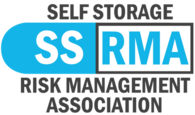An estimated 30,000 websites are hacked each day. Don’t let your facility website be one of them.
In 2021, businesses experienced a 50 percent increase in the number of cyberattacks each week compared to 2020. Security experts warn that the rate and sophistication of such attacks are expected to rise.
As self-storage operators increasingly move towards online rentals, they are becoming more and more of a target for cyber attacks. Such attacks can compromise customer data and the damage can cost operators thousands of dollars to repair. Some attacks use a type of computer virus called ransomware to take control of your machine and hold it for ransom. Needless to say, any kind of cyberattack is bad for your business.
Identifying Cyberattacks
Most cyberattacks succeed due to a lapse in human judgment. For example, “spearphishing” attacks involve sending a personalized message to a target that imitates a genuine communication from a trusted source. Such messages commonly encourage the victim to click on a link. This often leads to the log-in screen of a spoofed website (of a bank or software service for example), where the victim types in their username and password.
Falling victim to an attack like the one described above can be detrimental to your business. Once a hacker gains credentials to one of your accounts, it is very often a matter of time before they can infiltrate others. This is the primary reason why it is never a good idea to use the same password for multiple accounts.
Aside from adhering to secure password protocols, the best way to prevent attacks is by training your self-storage staff to identify them.
Why Your Storage Facility Needs Cybersecurity Training
Your front office staff is often the first, and last, line of defense against cyberattacks. Without proper training, it is easy to be duped by spearphishing and other types of attacks that use social engineering.
In the example provided in the previous section, a trained employee would hover over the link before clicking it to read the URL. They would then immediately notice that the web address is suspicious and not click through. The employee would flag the message as suspicious and report it, and potentially save you thousands of dollars and days of stress as a result
Spoofed websites are made to look real, but the URL will not be the same as the legitimate site. For example you might get a message claiming to be from LinkedIn that your password needs to be reset. You click on the URL and see that it starts with “linked-in.com” instead of the correct spelling. That is a sure sign you just landed on a suspicious website that is trying to steal your information.
Spotting phishing attempts isn’t so hard, once you learn what to look for. This is why requiring all employees to complete at least one cybersecurity training session each year is strongly recommended.
Putting Cybersecurity Training into Practice
The more cybersecurity training you can give to your employees the better protected your operation will be. Training can be conducted online, with different companies providing educational platforms to businesses. Training consists of different modules, or lessons, that take place through a series of slides, vidoes, quizzes and interactive scenarios.
You can also set up occasional phishing tests to see how your employees respond to a simulated attack. If they fall for such tests, it is a sign you need to step up their training.
A good place to start is Google’s free phishing simulator. Here you can test your skills separating malicious email messages from safe ones.
Below are some more resources for cybersecurity training worth considering:





